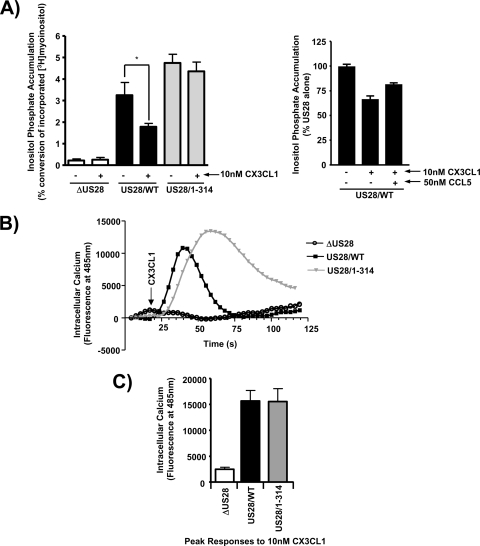FIG. 7.
CX3CL1/Fractalkine exhibits both agonist and inverse agonist properties toward US28 in HCMV-infected cells. (A) HFFs were infected with HCMV ΔUS28, HCMV FLAG-US28/WT, or HCMV FLAG-US28/1-314 virus at an MOI of 0.1. Medium containing 1 μCi of [3H]myoinositol/ml was added 24 h postinfection. At 45 h postinfection, the cells were left untreated or stimulated with 10 nM CX3CL1 for 3 h in the presence of LiCl (left panel). HFFs similarly infected with FLAG-US28/WT HCMV were incubated with 10 nM CX3CL1 in the presence or absence of 50 nM CCL5 for 3 h in the presence of LiCl (right panel). Accumulated inositol phosphates were determined at 48 h postinfection by using anion-exchange chromatography as described above. The data shown are derived from at least four independent experiments performed in duplicate and represent the means ± the SEM. (B) HFFs were infected with the above-described viruses at an MOI of 3. At 48 h postinfection, the effects of CX3CL1 were measured by labeling cells with Fluo-4 AM and analyzing calcium signaling after addition of 10 nM CX3CL1 using a FlexStation II fluorometer. The calcium traces are representative of at least three independent experiments performed in duplicate. (C) The peak calcium response after the addition of CX3CL1 is displayed graphically. The data shown are derived from eight independent experiments performed in duplicate and represent the means ± the SEM.

